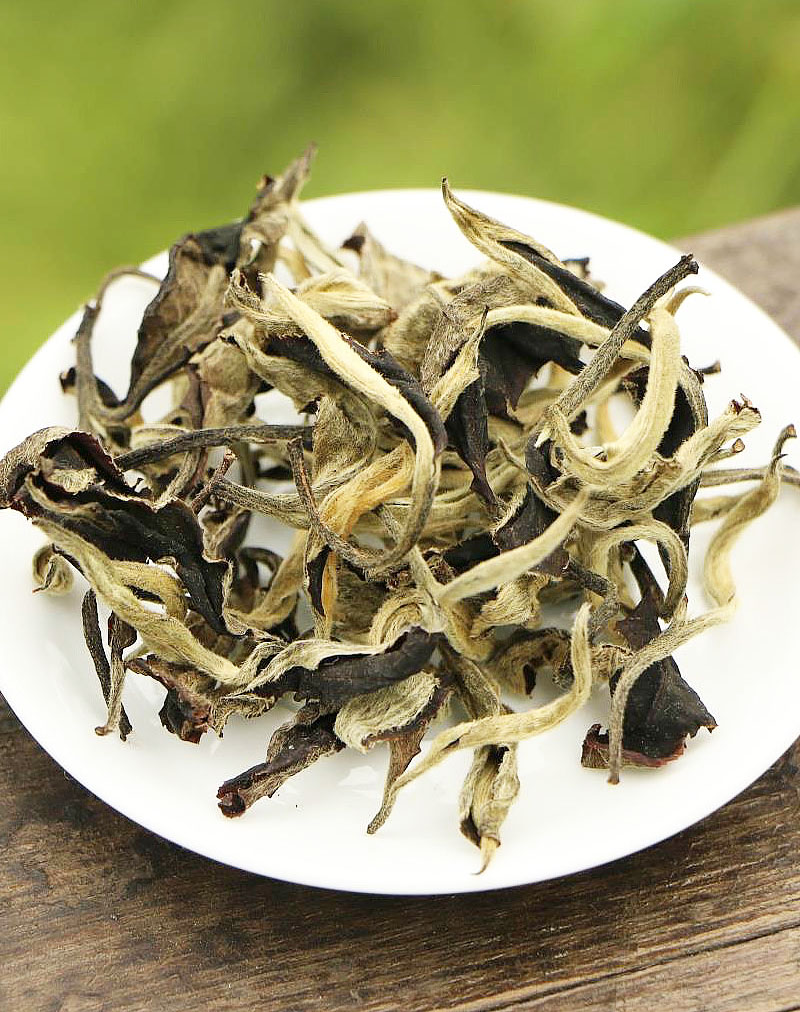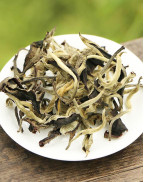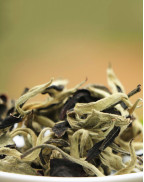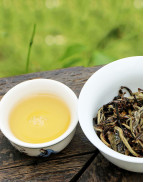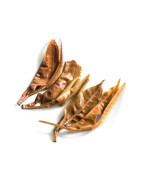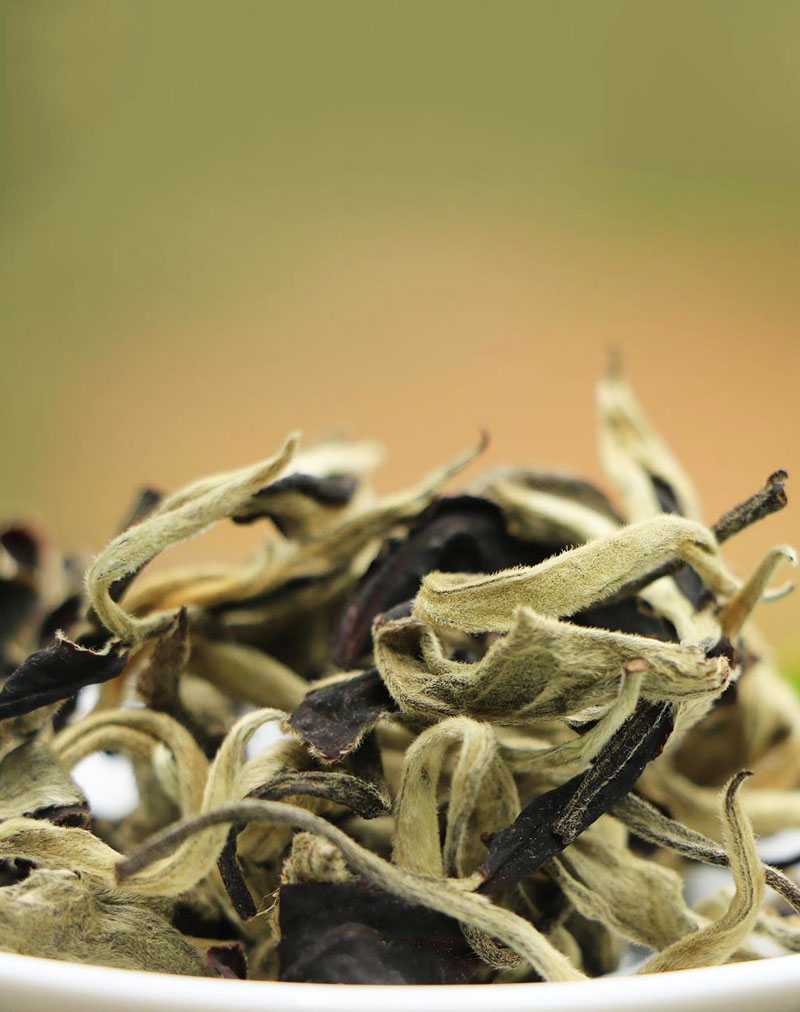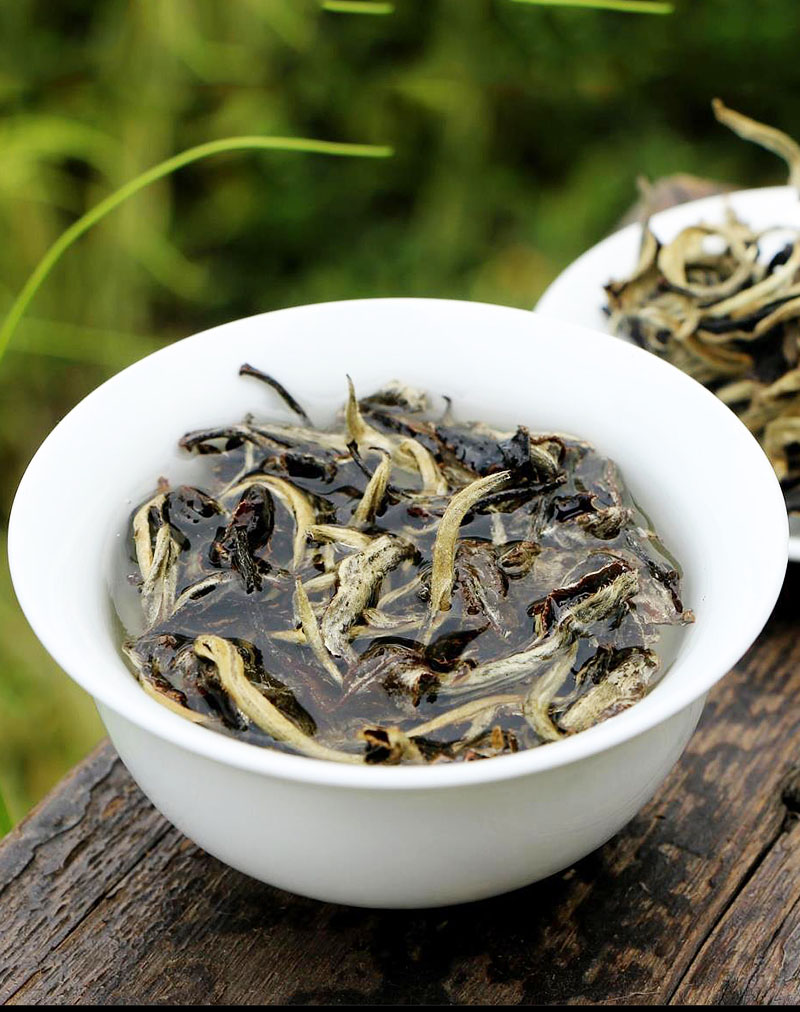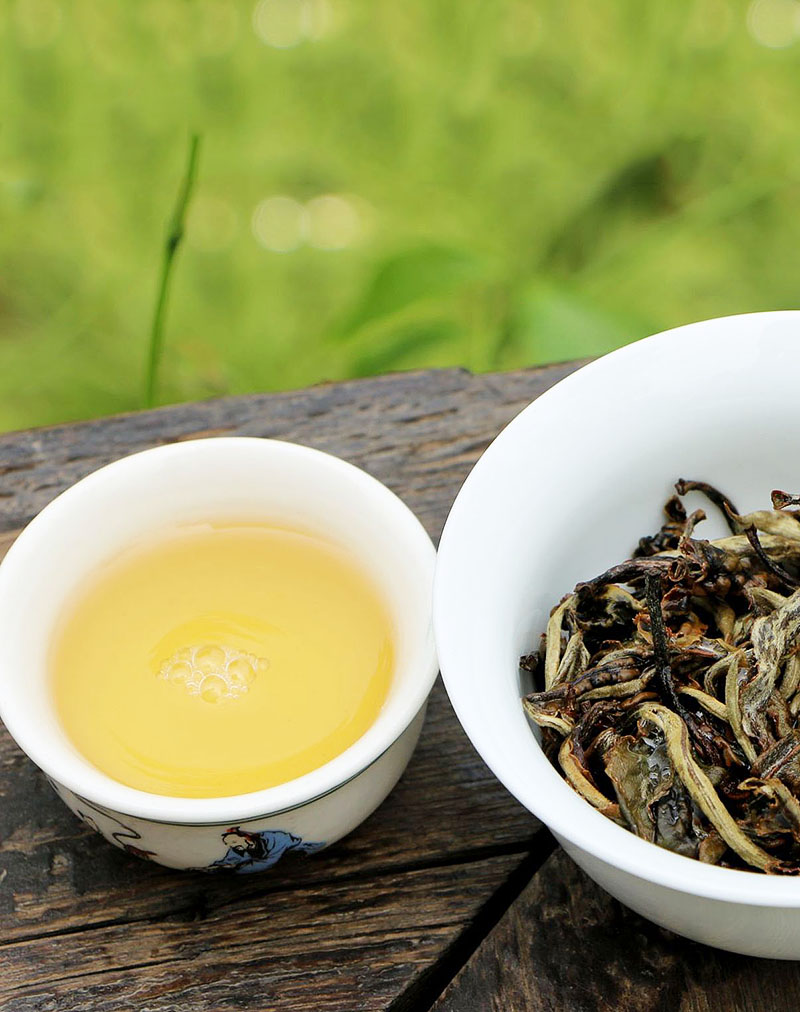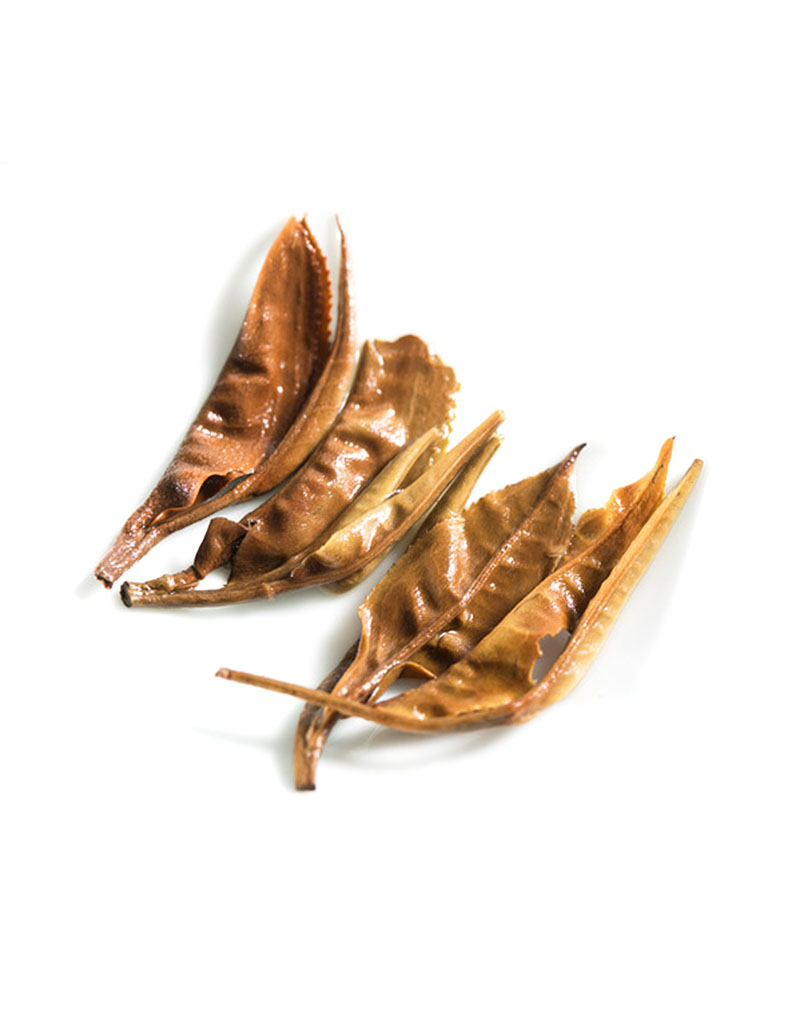Yangta High Mountain Moonlight White Tea
- Product Code: simple
- Availability: In Stock
Basic Info
Name: Yunnan High Mountain Moonlight White Tea
Other Names: Moonlight Bai Cha (Yue Guang Bai /月光白)
Category: Yunnan White tea
Origin: Yangta, Jinggu, Yunnan, China
Tea Bush: Jinggu Yangta Da Bai Cha
Taste & Aroma: Fresh, full-bodied, pleasant fragrance, soft,light, floral,a lingering sweetness
Dry Leaf: Silver-white fat tea leaves covered with down
Tea Garden: Yangta ancient tea garden
Liquor: Clear yellow
Harvest Period: Spring 2024
Altitude: 1600M above sea level
Fermentation: Light
Season: Spring tea
Age of Tea Trees: 50 years+
Item Form: Loose tea
Ingredients:100% hand-picked natural tea buds and leaves
Shelf Life: 2-3 years at room temperature
Storage: Stored in cool, airtight, opaque containers
Flavor: unflavored
Caffeine: Low
Yangta High Mountain Moonlight White Tea
Yangta Da Bai Tea, also known as "White Dragon Beard Tribute Tea," is a rare and prized tea from Dacun Yangta Town, a high-altitude region in Yunnan Province, China. With its excellent tea tree varieties and trichome-covered buds and leaves, this tea stands out with its full and heavy tea leaves, silver-white appearance, pleasant fragrance, clear yellow tea soup, and rich, sweet taste. The name of this tea is derived from its place of origin, Yangta, which is nestled in the cool climate of high mountains and dense forests.
Having a history of over 150 years, Yangta Da Bai Tea is unique in its white appearance and high market value. It was even designated as a tribute tea, specifically the "White Dragon Beard Tribute Tea," for the imperial court, due to its marketability. As one of the eight famous teas in Yunnan Province, it has gained recognition and was featured in the Tea Volume of the Chinese Agricultural Encyclopedia. Its rarity has led to its popularity, and the government of Minle Township has taken advantage of the region's famous tea by introducing over 6000 acres of Da Bai Tea from ancient trees in the Yangta Da Bai Tea garden. No longer restricted to tribute tea, Da Bai Tea has now become a favorite among ordinary tea enthusiasts.
Sidenote: It is suitable to use the cold brewing method for Yangta Da Bai Tea. Cold brewing, which involves steeping tea leaves in cold water, is becoming increasingly popular, especially during hot summers when people crave a refreshing drink. Cold brewing tea is very simple - just place the tea leaves in mineral water and store the bottle in the refrigerator. After a short wait of several tens of minutes or even a few hours, the tea is ready to be enjoyed. Although cold brewing doesn't release the aroma as quickly as hot brewing, it allows the tea to gradually infuse and develop a rich flavor. The tea leaves slowly release their aroma, creating a gentle and harmonious taste.
Introduction to Yangta Da Bai Cha
In Jinggu County, Puer, Yunnan, there is a town called Minyue. Located 16 kilometers away from Minyue, there is a community called Dacun Yangta. Dacun Yangta enjoys abundant sunlight and rainfall, with an altitude of 1700 meters. In the Niujian Mountain area of Dacun Yangta, there is a high-quality large-leaf tea known as "Yangta Da Bai Cha". The tea buds are covered with fine hairs, and the processed tea leaves are thick and plump, with visible white hairs, clear and bright soup color, and a rich and mellow flavor, making it known as "Yangta Da Bai Cha". Since the Qing Dynasty, local officials have instructed tea farmers to produce "Bailong Xu Gong Cha (White Dragon Beard Tribute Tea)" from the large white tea and offer it as tribute to the imperial court. This ancient large white tea is renowned for its excellent taste and resistance to brewing, and has become a precious tea. The famous Jinggu Da Bai Cha originates from here. The tea you see now is made from high-quality large white tea leaves harvested from Dacun Yangta Community.

Dacun Yangta, Jinggu County, Yunnan Province
Show Full Description
During the reign of Emperor Daoguang of the Qing Dynasty, a businessman named Chen Liujiu discovered this tea grown by the Lancang River and brought them back to the Yangta for cultivation. Today, the mother tree of this tea still exists in the local area, with a history of more than 150 years.
Basic Information
Moonlight White Tea, also known as Moonlight Bai Cha (Yue Guang Bai /月光白), belongs to the category of white tea. It is a type of white tea made using Yunnan Jinggu Da Bai Cha as the primary raw material through traditional white tea production techniques. The leaves of Moonlight White Tea are black on the surface and white on the back (alternating black and white), with visible buds, bright white curves, and a bright orange-yellow infusion. The taste is mellow, thick, and leaves a sweet aftertaste. Da Bai tea can be made into various shapes, such as cake tea and brick tea. Of course, this tea is a traditional Da Bai loose tea - the earliest form.
Origin of the Name
The name "Moonlight White" comes from the tea's production method and the color of the dry tea leaves. The leaves are black on the surface, white on the back (with visible white buds), creating a pattern resembling a crescent moon. The tea is named "Moonlight White" because it looks like the moon in the night sky. Additionally, the tea is processed at night, away from sunlight, and slowly air-dried under moonlight, giving it the name "Moonlight White." The tea's gentle taste, sweetness, and lingering aftertaste align with the Daoist concept of "Yin and Soft," leading to its alternative name, "太乙茶Taiyi Tea." Also, since the tea is harvested and processed by young girls, it is known as "Moonlight Beauty."

A Topographic Map Of Yunnan
Harvesting and Production Process
The harvesting of Moonlight White Tea leaves is meticulous, focusing on picking one bud and one or two leaves near the bud. After harvesting, the leaves are spread out on sifts, placed on wooden racks indoors to avoid direct sunlight. This allows the leaves to naturally wither, dehydrate, and undergo mild fermentation during the withering process without rolling. Traditional white tea often employs sunlight withering, but Moonlight White Tea requires shade drying, either in moonlight or a dark place.
Origin
Most of the fresh leaves for Moonlight White Tea come from Yunnan Jinggu Da Bai Cha (大白茶), located in Jinggu County, Puer City, Yunnan. Materials from Lan Cang and Lin Cang are also used. The leaves Da Bai Cha (大白茶) are also the raw material for many famous Pu'er teas produced locally.
This Yue Guang Bai White Moonlight tea is made from leaves that are plucked from the same Yunnan trees that are used for producing the region’s numerous pu-erh teas.

A Jinggu Ancient Tea Tree With An Engraved Number Plate
Divergence on the Classification of Moonlight White Tea
There has always been a divergence regarding the classification of Moonlight White Tea, and even within academic circles, there is still no clear consensus on which category this tea belongs to.
Some argue that Moonlight White Tea should be classified as black tea. While its processing technique lacks the frying and rolling typically associated with white tea, its quality characteristics align more closely with black tea. Moonlight White Tea undergoes heavier withering than white tea but lighter fermentation than black tea, placing it somewhere in between the two, leaning towards black tea. Some even suggest that Moonlight White Tea should be categorized as black tea. Traditional black tea involves four main processes: withering, rolling, fermentation, and drying. In contrast, Moonlight White Tea undergoes withering by spreading and air-drying without rolling, allowing for slow, natural fermentation, showcasing a dark leaf surface, similar to black tea but darker than white tea.
Others argue for its classification as Puer tea. This perspective stems from Moonlight White Tea's primary production area being in Yunnan's Puer region (formerly Simao region). Its raw material comes from Yunnan large-leaf tea plants, combined with certain processing techniques resembling those of Puer tea, making it a branch of the Puer tea family.
Alternatively, Moonlight White Tea is suggested to belong to the white tea category. Its production technique shares some similarities with Fujian white tea, with the addition of a light fermentation mode during withering. The infusion gradually transitions from an initial greenish-yellow (first three infusions) to a deeper yellow (fourth to seventh infusions), becoming progressively clear. Its taste is full-bodied and mellow, with a fragrant and warm aroma. Moonlight White Tea offers a unique olfactory experience, starting with a honey-like sweetness, followed by elegant fruity or floral notes.

Fresh Leaves Of Yangta Da Bai Cha
The six major tea categories are classified based on their production methods and the amount of tea polyphenols. Although Moonlight White Tea uses fresh leaves sourced from Yunnan Puer tea trees, its production method involves placing the leaves indoors for natural withering, resulting in mild fermentation (approximately 10%). During the production process, it does not undergo rolling and lacks the characteristics of post-fermentation. Therefore, the production technique, fermentation process, and degree of fermentation all fall within the category of white tea. Hence, Moonlight White Tea is undoubtedly a type of white tea.
In summary, conventionally, Moonlight White Tea is commonly categorized as white tea. It can be understood simply as a unique "white tea" crafted using fresh leaves from Yunnan large-leaf tea plants and employing the white tea production techniques of Fujian.
Characteristics
Moonlight White Tea has a unique appearance with black front and white back leaves, showcasing visible buds like a crescent moon. The infusion is bright orange-red, with a high and long-lasting sweet aroma. The taste is mellow, full-bodied, and leaves a lingering sweetness. The tea leaves have a uniform red color after brewing.
After brewing, the tea liquor starts with a greenish-yellow color, transitioning to red and then yellow again, becoming increasingly clear. The tea releases a rich, ethereal fragrance, initially reminiscent of honey, transforming into elegant fruity or floral notes. The aroma of Moonlight White Tea subtly changes with each brewing.

The Origin Of Yunnan Jinggu Da Bai Cha
Moonlight White Tea is considered a specialty tea primarily processed through withering, and its main chemical components are similar to those in green tea. It contains a unique marker - the highest known content of amino acids among various tea types, ranging from 6% to 9%, reaching up to 11.4% in samples from Jingmai Mountain, Yunnan.
With its rich history, exquisite appearance, and delightful taste, Yangta Da Bai Tea is truly a tea worth experiencing. As one of the eight famous tea varieties in Yunnan Province, it has long been cherished for its rarity and high market value. Now, with the introduction of over 6000 acres of Da Bai Tea from ancient trees, this tea is no longer limited to the imperial court but enjoyed by tea enthusiasts from all walks of life. Whether you're a connoisseur or simply someone who appreciates a good cup of tea, Yangta Da Bai Tea is sure to satisfy your taste buds and leave you craving for more. Don't miss the opportunity to indulge in this exceptional tea – try Yangta Da Bai Tea today and embark on a journey of flavor and sophistication.
| Chinese Gongfu Method | |
| Tea | 4g |
| Water | Gaiwan 3oz / 90ml |
| Time | 6 infusions (20s,30s,45s,55s,60s, 65s) |
| Temperature | 90℃ / 194℉ |
| Teapot Method | |
| Tea | 6g |
| Water | Teapot: (17oz / 500ml) |
| Time | 2- 4mins |
| Temperature | 90℃ / 194℉ |


